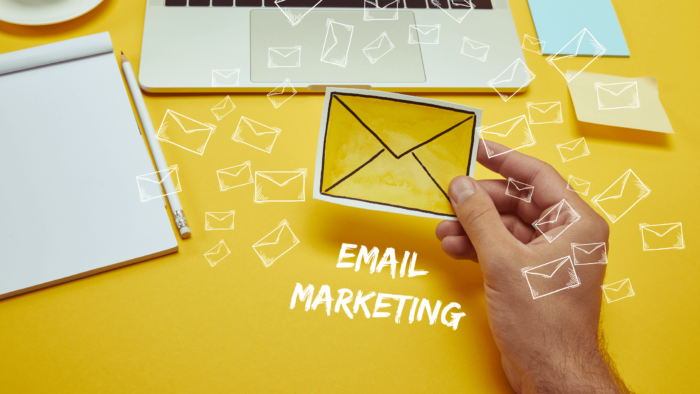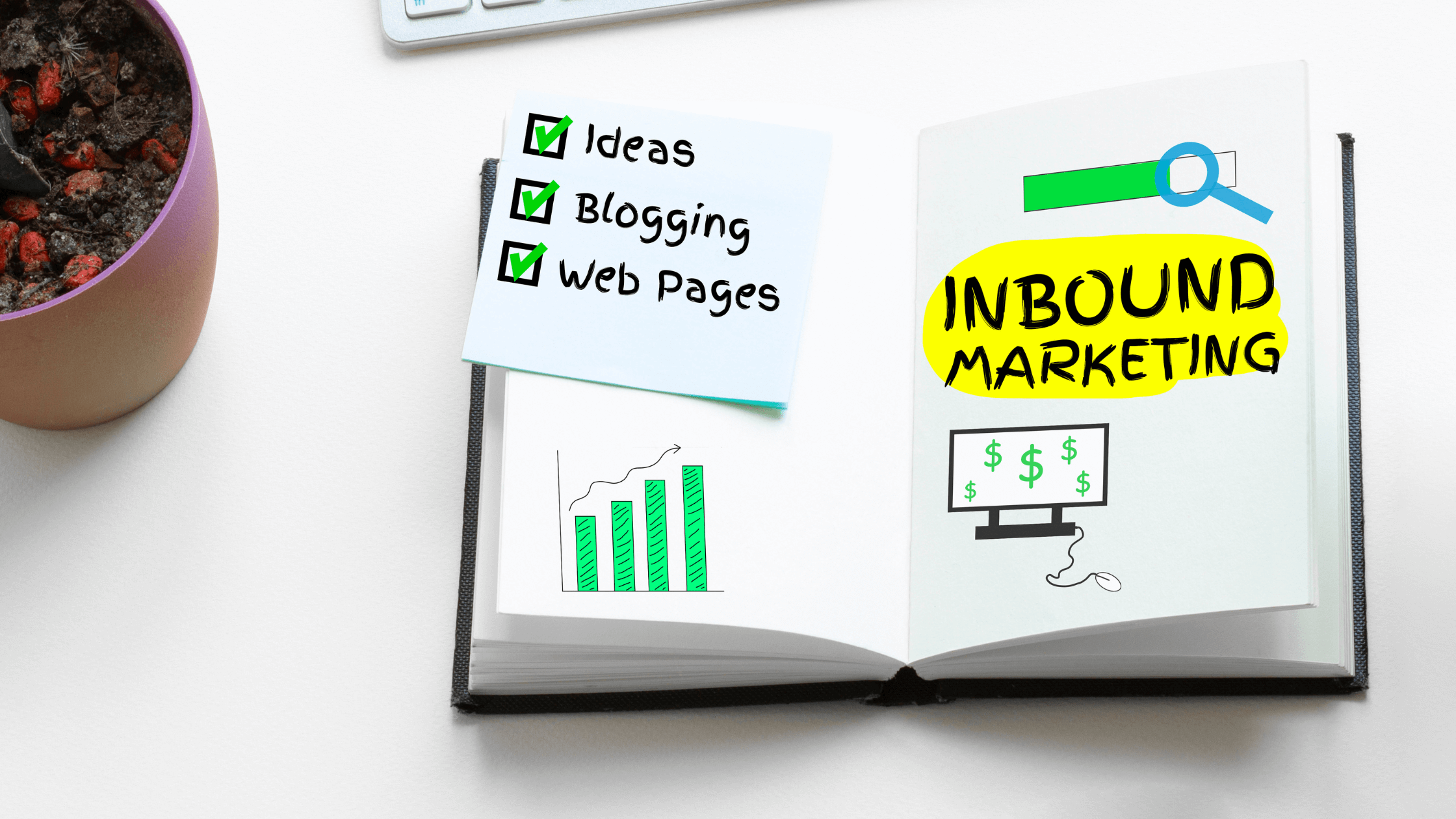Crafting an effective email marketing strategy isn’t easy…
With the constant influx of messages flooding our inboxes, a well-crafted email marketing strategy can help you connect with your audience, build trust, and, ultimately, drive conversions.
In this post, I’ll share 11 actionable tips, backed by industry experts, that will help you craft an email marketing strategy that stands out and converts.
Let’s dive in.
1. Define Your Goals
Embarking on your email marketing journey without clear goals is like setting sail without a compass to guide you.
It’s imperative to know precisely what you want to achieve, whether it’s driving hordes of traffic to your website, boosting your sales or enhancing customer engagement.
A solid set of objectives is the bedrock of your email marketing strategy.
Best Practices for Defining Your Goals
- Be Specific: Instead of a nebulous aim like ‘increase sales’, hone in on something more concrete, say, ‘augment sales by 10% in the ensuing quarter’. This laser focus gives you a tangible target and simplifies the process of measuring success.
- Make it Measurable: Quantifiability is key. You need to be able to gauge your progress using discernible metrics such as click-through rates, conversion rates or the tally of new subscribers.
- Align with Business Objectives: Ensure your email marketing goals are in lockstep with your overarching business objectives. This guarantees that your email marketing endeavors are a cog in the machine of your business’s larger goals.
Final Thought
Keep in mind…
The goals you set will steer your email marketing strategy, dictating everything from the content you craft to how you quantify success.
So, it’s pivotal to periodically reassess and, if necessary, recalibrate your goals to ensure they remain pertinent and attainable, especially as the business terrain and your company’s aims may shift over time.
2. Know Your Audience
No two customers are alike.
And in the world of email marketing, this truism rings especially loud.
Grasping the wants, needs, and pain points of your audience is pivotal for crafting messages that resonate.
A deep understanding of your audience is not just beneficial, it’s essential for a potent email marketing strategy.
Best Practices for Knowing Your Audience
- Create Personas: Develop detailed personas for different segments of your audience. This involves gathering data on their demographics, preferences and behaviors to create a comprehensive picture of who they are and what they need.
- Analyze Past Interactions: Examine past interactions your audience had with your emails. Analyze open rates, click-through rates and engagement levels to understand what type of content your audience prefers.
- Use Surveys and Feedback: Actively seek feedback from your audience. Use surveys, feedback forms or simply ask them in your emails what they like, dislike and what they want to see more of.
Final Thought
Understanding your audience is the cornerstone of any successful email marketing strategy.
However, it’s not a one-time task but an ongoing process. Your audience’s needs and preferences may change over time, so it’s essential to continually gather and analyze data to keep your understanding of your audience up to date.
3. Segment Your List
In email marketing, one size most definitely does not fit all.
Sending the same email to your entire list is a surefire way to miss the mark. Instead, segmenting your list into smaller, more targeted groups can drastically improve engagement and relevance.
Simply put…
List segmentation is a non-negotiable for a high-performing email marketing strategy.
Best Practices for Segmenting Your List
- Demographic Segmentation: This involves dividing your email list based on demographic information such as age, gender, location or occupation.
- Behavioral Segmentation: This involves dividing your list based on past behaviors such as purchase history, website activity or email engagement.
- Psychographic Segmentation: This involves dividing your list based on psychological traits such as values, interests and lifestyle.
Final Thought
Segmenting your list is not just about increasing open rates and click-through rates. It’s about sending the right message to the right person at the right time.
Remember, relevance is key in email marketing and segmenting your list ensures that your messages are as relevant as possible to each recipient.
4. Personalize Your Content
Personalization is not just a nice-to-have…
In email marketing, it’s expected.
Your audience craves content that speaks directly to them, not generic messages that could be sent to anyone. And that doesn’t just mean using the person’s name. Personalization is about crafting content that aligns with their specific needs, preferences, and stage in the customer journey.
When executed correctly, personalization can be the linchpin of a successful email marketing strategy.
Best Practices for Personalizing Your Content
- Use Personalization Tokens: Incorporate personalization tokens such as the recipient’s name, location or past purchases in the subject line and body of your email.
- Tailor Content to Buyer’s Journey: Customize the content of your email based on the recipient’s stage in the buyer’s journey. For example, a prospect in the awareness stage might appreciate educational content, while someone in the consideration stage might prefer a comparison guide.
- Leverage Behavioral Triggers: Send emails based on the recipient’s behavior. For example, if a subscriber has recently visited your pricing page, send them an email with more information about your pricing structure or a special offer.
Final Thought
While personalization is incredibly effective, it’s also important to strike the right balance. Over-personalization can come off as creepy or invasive.
Remember to always respect your audience’s privacy and use personalization to enhance their experience, not invade their personal space.
5. Craft Compelling Subject Lines
Your subject line is the gateway to your email.
It’s the first thing your audience sees, and it plays a pivotal role in determining whether your email gets opened or relegated to the trash bin.
A compelling subject line piques curiosity, creates a sense of urgency or highlights the value of the email’s content.
In short…
It’s a critical component of an effective email marketing strategy.
Best Practices for Crafting Compelling Subject Lines
- Convey Value: Make it clear what the recipient will gain by opening your email. Whether it’s a special offer, a piece of valuable content or exclusive news, make sure the value is evident in the subject line.
- Create Urgency: Encourage recipients to open your email promptly by creating a sense of urgency. However, be careful not to overdo it as this can lead to fatigue over time.
- Keep it Short and Sweet: Subject lines that are concise and to the point tend to perform better. Aim for a subject line that is around 50-60 characters long.
Final Thought
While it’s important to craft compelling subject lines, it’s equally important to deliver on the promises you make.
A catchy subject line may get your email opened, but if the content doesn’t align with the expectations set by the subject line, it can lead to disappointment and erode trust.
6. Use Clear Call-to-Actions (CTAs)
Your email has been opened and your content has been consumed.
Now what?
Well, this is where a clear and compelling call-to-action (CTA) comes into play. A CTA guides your audience on the next steps they should take, whether it’s making a purchase, signing up for a webinar or downloading a resource.
A well-crafted CTA is crucial for driving conversions and is an indispensable element of an effective email marketing strategy.
Best Practices for Using Clear Call-to-Actions (CTAs)
- Be Specific: Clearly state what you want the recipient to do next. Instead of using generic phrases like ‘click here’, use more descriptive language like ‘download your free guide’.
- Create a Sense of Urgency: Encourage action by creating a sense of urgency with your CTAs. For example, ‘Claim your 50% discount before it expires!’
- Make it Stand Out: Your CTA should be visually prominent in your email. Use contrasting colors, larger font sizes and white space around your CTA to make it stand out.
Final Thought
A well-crafted CTA is not just about the copy you use — it’s also about the visual design and placement within the email.
Experiment with different designs, placements and copy to see what works best for your audience.
But above all, remember that the primary goal is to make it as easy as possible for the recipient to take the desired action.
7. Optimize for Mobile
In our increasingly mobile world, it’s likely that a significant portion of your audience will be reading your emails on their smartphones or tablets.
So, it’s crucial that your emails are optimized for mobile devices. This includes not only the design and layout of your email but also the content and CTA.
A mobile-optimized email is essential for ensuring that your message is accessible and engaging to all members of your audience, regardless of the device they are using.
Best Practices for Optimizing for Mobile
- Use a Responsive Design: A responsive design ensures that your email looks good and is easy to read on all devices, from desktops to smartphones.
- Keep it Concise: Mobile screens are smaller, so it’s important to get to the point quickly. Use concise language and clear headings to make your email easy to scan.
- Use Larger Font Sizes: Small text can be difficult to read on mobile devices. Use a larger font size to ensure your text is legible on all screens.
Final Thought
While it’s important to optimize your email for mobile devices, don’t forget about your desktop users. It’s important to strike a balance and create an email that works well on all devices.
Test your emails on various devices and screen sizes to ensure that your message is clear and engaging, regardless of how it’s being accessed.
8. A/B Test as Much as You Can
In email marketing, making assumptions can be dangerous.
What works for one audience may not work for another, and what worked yesterday may not work tomorrow.
This is why A/B testing, also known as split testing, is so vital.
It involves sending two different versions of an email to a small segment of your list and then analyzing which version performs better.
A/B testing can be used to optimize everything from subject lines to email content to CTAs, making it an invaluable tool for refining your email marketing strategy.
Best Practices for A/B Testing
- Test One Element at a Time: To accurately determine the impact of a change, only test one element at a time. For example, if you’re testing the effectiveness of a subject line, don’t change anything else in the email.
- Use a Significant Sample Size: Ensure that your test sample is large enough to produce statistically significant results. A larger sample size will give you more accurate and reliable results.
- Analyze and Implement the Results: Once the test is complete, analyze the results and implement the winning version. However, don’t stop there. Continuous testing and optimization are key to maintaining a successful email marketing strategy.
Final Thought
A/B testing is an ongoing process of continuous improvement.
The digital landscape and your audience’s preferences are always evolving, so it’s important to regularly test and optimize your emails to ensure they continue to perform well.
9. Be Consistent
Consistency is key in any marketing strategy, and email marketing is no exception. This means being consistent in the frequency of your emails, the tone and style of your content and the branding and design of your emails.
Consistency helps to build trust and establish a strong brand identity. It also sets clear expectations for your audience, so they know what to expect and when to expect it.
In a world inundated with emails, consistency can help your messages stand out and be recognized by your audience.
Best Practices for Being Consistent
- Create an Email Schedule: Plan your emails in advance and create a schedule. This will help ensure that you are sending emails at a consistent frequency.
- Use a Consistent Design: Use a consistent design template for all your emails. This includes using the same colors, fonts and logo.
- Maintain a Consistent Tone: Ensure that the tone of your emails is consistent with your brand voice and the expectations of your audience.
Final Thought
While consistency is important, it’s also important to be flexible. There may be times when it’s necessary to deviate from your schedule or send an extra email. The key is to find a balance between maintaining consistency and being responsive to the needs of your audience and your business.
10. Avoid Spam Traps
No one wants their emails to end up in the spam folder.
And yet… many marketers inadvertently fall into spam traps that prevent their emails from reaching their intended recipients.
Spam traps are email addresses used by internet service providers (ISPs) and email providers to identify and filter out spam.
If you send an email to a spam trap, it can result in your email, and possibly your entire domain, being marked as spam. This can severely damage your sender reputation and deliverability, making it harder for your emails to reach the inbox.
Best Practices for Avoiding Spam Traps
- Regularly Clean Your Email List: Remove inactive subscribers and bounced emails from your list regularly. This will help ensure that you are only sending emails to valid, engaged subscribers.
- Use Double Opt-In: Require new subscribers to confirm their email address before adding them to your list. This will help ensure that you are only adding valid email addresses to your list.
- Don’t Buy Email Lists: Purchased lists are often full of invalid email addresses and spam traps. Building your own list organically is the best way to ensure its quality.
Final Thought
Avoiding spam traps is crucial for maintaining a healthy sender reputation and ensuring your emails reach the inbox.
Regularly cleaning your email list, using double opt-in and avoiding purchased lists are all essential best practices for avoiding spam traps.
11. Make it Easy for People to Unsubscribe
It may seem counterintuitive, but making it easy for people to unsubscribe from your email list is actually smart. Really smart.
If a subscriber no longer wishes to receive your emails, it’s better for them to unsubscribe than to mark your emails as spam. This is because spam complaints can damage your sender reputation and affect your email deliverability.
By making it easy for people to unsubscribe, you can maintain a healthier email list and a better sender reputation.
Best Practices for Making it Easy to Unsubscribe
- Include a Clear Unsubscribe Link: Make sure to include a clear and easily accessible unsubscribe link in every email. This is not only a best practice but also a legal requirement in many jurisdictions.
- Don’t Overcomplicate the Process: Make the unsubscribe process as simple as possible. Don’t ask for too much information or make subscribers jump through hoops to unsubscribe.
- Respect Their Decision: Once a subscriber has chosen to unsubscribe, remove them from your list promptly and don’t send any further emails.
Final Thought
While it’s always disappointing to see a subscriber go, it’s important to respect their decision and make the process as easy as possible.
A clean, engaged email list is far more valuable than a larger list full of disinterested or annoyed subscribers.
Ready to Craft Your Email Marketing Strategy?
Nailing your email marketing strategy isn’t easy — especially when you’re just getting started.
Hopefully, these 11 tips will help.
Ready to transform your email game?
Before you leave, could you do me a quick favor and leave me a comment below?
Which tip resonated with you the most? Any crucial strategies you think I missed?
I’d love to hear your thoughts!
But before you go…
If you’re ready to start and grow your dream business… the overwhelm-free way… then you’ll want to check out my program — Live Your Message Lab.
It’s the low-pressure, minimal-time commitment way to achieve your monthly goals. Each month, you’ll get the exact steps you need to take real action in your business so you can see real results. And you’ll get the coaching, support, tools and community you need to make it happen!
I hope to see you inside Lab. 🙂
Love it? Hate it? Let me know...
-
I’d have to examine with you here. Which is not one thing I usually do! I take pleasure in reading a post that may make folks think. Additionally, thanks for permitting me to comment!
-
Thanks – Enjoyed this blog post, how can I make is so that I receive an update sent in an email every time you publish a fresh article?
-
Thank you for the love! You can subscribe to our email list here: https://liveyourmessage.com/subscribe/
-


























Leave a Comment